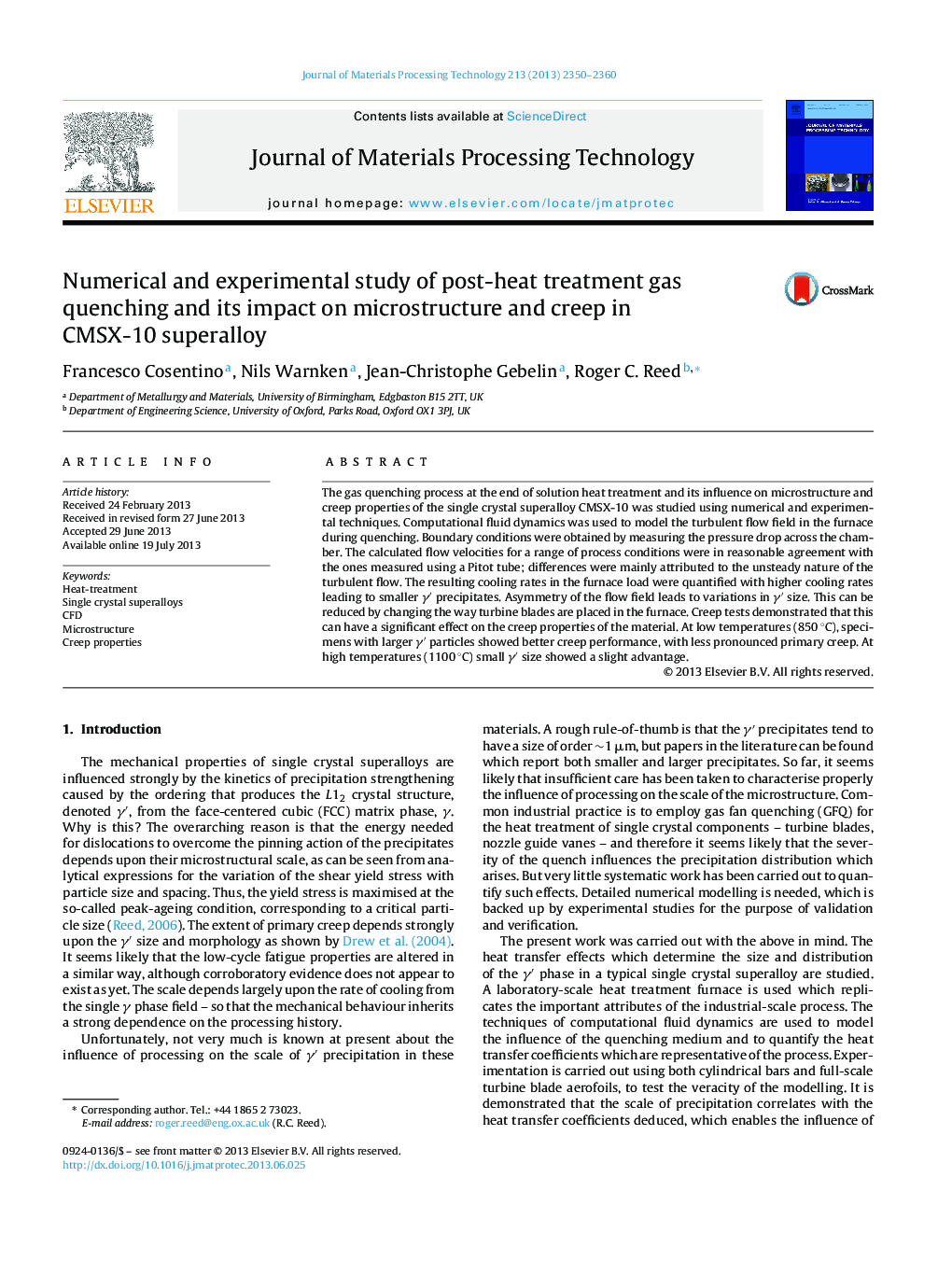| Article ID | Journal | Published Year | Pages | File Type |
|---|---|---|---|---|
| 10418352 | Journal of Materials Processing Technology | 2013 | 11 Pages |
Abstract
The gas quenching process at the end of solution heat treatment and its influence on microstructure and creep properties of the single crystal superalloy CMSX-10 was studied using numerical and experimental techniques. Computational fluid dynamics was used to model the turbulent flow field in the furnace during quenching. Boundary conditions were obtained by measuring the pressure drop across the chamber. The calculated flow velocities for a range of process conditions were in reasonable agreement with the ones measured using a Pitot tube; differences were mainly attributed to the unsteady nature of the turbulent flow. The resulting cooling rates in the furnace load were quantified with higher cooling rates leading to smaller γⲠprecipitates. Asymmetry of the flow field leads to variations in γⲠsize. This can be reduced by changing the way turbine blades are placed in the furnace. Creep tests demonstrated that this can have a significant effect on the creep properties of the material. At low temperatures (850 °C), specimens with larger γⲠparticles showed better creep performance, with less pronounced primary creep. At high temperatures (1100 °C) small γⲠsize showed a slight advantage.
Related Topics
Physical Sciences and Engineering
Engineering
Industrial and Manufacturing Engineering
Authors
Francesco Cosentino, Nils Warnken, Jean-Christophe Gebelin, Roger C. Reed,
